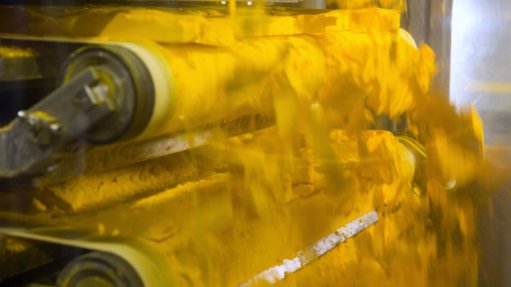
ASX-listed Lotus Resources has published a revised mineral resource estimate (MRE) of 155.3-million tonnes, grading 345 parts per million (ppm) triuranium octoxide (U3O8), for the Letlhakane uranium project, in Botswana.
This means the project can deliver 80-million pounds of recovered uranium over its life, based on a 70% recovery rate, the company says.
The revised MRE is constrained by pit shells, demonstrating reasonable prospects of eventual economic extraction and is based on a 200 ppm cut-off grade.
The company says the revised MRE establishes Letlhakane as a large and attractive standalone development project, which, together with its Kayelekera project, in Malawi, can position the company as a globally significant uranium producer.
Lotus reports the Letlhakane resource scale and production potential is in line with other ASX-listed companies’ primary uranium assets, including Deep Yellow’s Tumas project and Bannerman Energy’s Etango project.
Based on higher cut-off grades, there is potential for mining to target even higher-grade portions of the deposit in the early years of its operation.
The revised MRE will support Lotus’ proposed mining studies and metallurgical testwork.
The company plans to publish a scoping study on the project in the last quarter of this year.
“Since completing the acquisition of Letlhakane last year, we have spent considerable time assessing more than a decade’s worth of historical work completed on the site.
“This analysis has resulted in the project’s potential significantly exceeding our initial expectations, with it clearly having the capacity to be a major uranium-producing asset for a long time,” says Lotus MD Keith Bowes.
Meanwhile, the Kayelekera project is on track for restarted uranium production late in 2025.
By combining the two assets, Lotus can potentially produce more than six-million pounds of U3O8 a year.